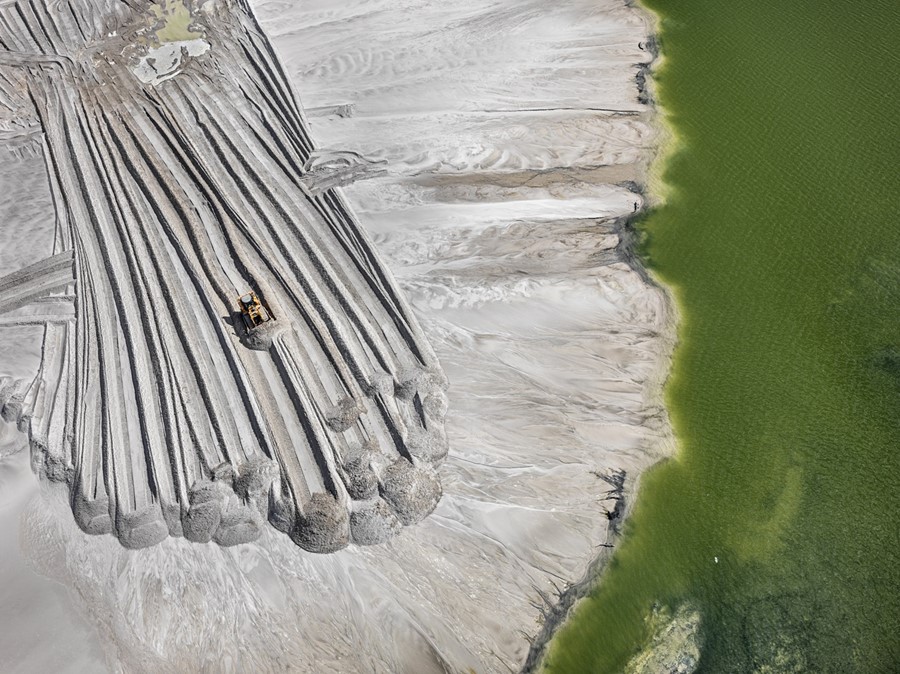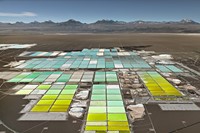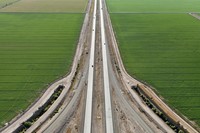Edward Burtynsky’s photographs show surreal and sublime wastelands created by the industrial processes that are pushing the planet to its limits
“Beauty” is not a word Edward Burtynsky wants associated with his large-format photographs of breathtaking industrial landscapes. Nevertheless, the Canadian photographer has been accused of aestheticising disaster. For almost 40 years, Burtynsky’s unsettling work has taken a bird’s-eye-view on how industry is spectacularly transforming nature, and our world. His interest, he insists, is not in capturing some terrible beauty, but rather, documenting reality in a visually compelling way.
From a distance, the rough-hewn tiers of marble quarries, the ravaged patchwork of deforested land and the vivid strata of open-pit copper mines appear strangely alluring. The tension between the dramatic pull of Burtynsky’s photographs and the controversy of what they capture is the very contradiction that makes his work so gripping. These sites, where mass human consumption exacts its most devastating impact on the planet, have rarely, if ever, been shown in such a sublime light. It is sometimes hard to look at, but Burtynsky makes it even harder to look away.
The sublime is an elusive idea artists have pursued for more than four hundred years. While early traditions associated the term with experiences of both wonder and terror inspired by the vastness of nature, more recently contemporary practitioners like Burtynsky have found the sublime in the awe-inspiring scale of the capitalist-industrialist system and the rise of technology.
“I feel that the sublime is now us dwarfed by our own technological advancements,” says Burtynsky, whose body of work continues to grow in tandem with the increasing magnitude of his subject matter. Previous projects such as Oil and Quarries have been singular investigations into great processes of extraction, which are shaping and reshaping the Earth’s surface in the name of human need. His latest project has been four years in the making and is his most ambitious yet.
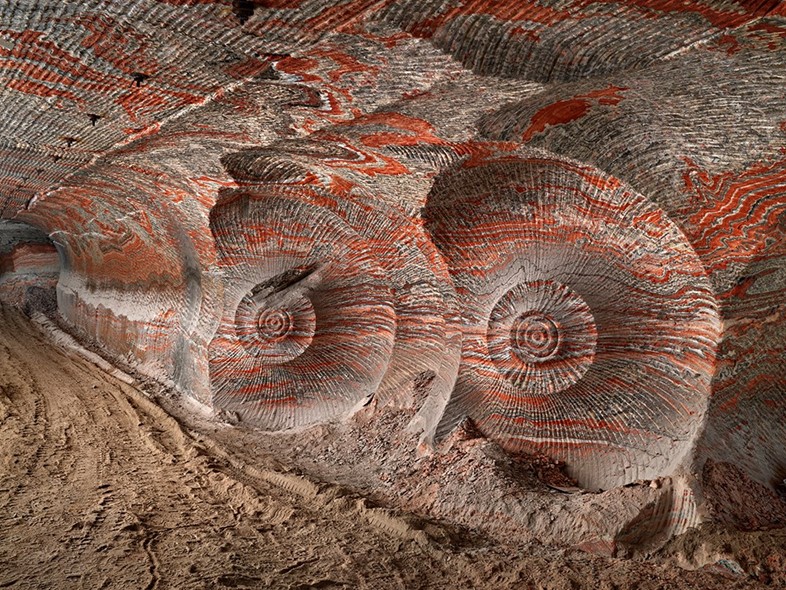
For nearly two decades, climate scientists have proposed that profound human impact on the environment has recently caused the Earth to enter a new geological epoch: the Anthropocene. Burtynsky and his long-time collaborators Jennifer Baichwal and Nicholas de Pencier have been busy investigating the forces behind this shift since 2014. Combining photography, film, and virtual and augmented reality, The Anthropocene Project is a sweeping survey of the ways in which urbanisation, industrialisation and agriculture are pushing the planet to its limits.
The trio visited 20 countries across six continents for the multimedia project, documenting everything from the towering concrete seawalls in China, which now cover 60 per cent of the mainland coast, to the biggest terrestrial machines ever built, which are moving soil at fantastical scales in Germany. With alarming new findings in a landmark United Nations report on climate change, The Anthropocene Project is unveiled at a critical moment.

Although the word ‘Anthropocene’ has slowly gathered momentum in recent years, it is still not widely known. Through this new body of work, which culminates in two major museum shows in Canada, a feature-length documentary, a book and an exhibition at Flowers Gallery in London, Burtynsky and his creative partners hope to change that. “In a way, we are evangelising the word,” says Burtynsky, who sees the Anthropocene as an umbrella for the ideas he has explored for the majority of his career.
In his early work, Burtynsnky was fascinated by nature itself – an interest he claims goes back to time spent in the wilds of southern Ontario while growing up. “There is something about deep time that you understand when you’re in a landscape that’s pristine and hasn’t had our boot on its throat, so to speak,” he says. It wasn’t until later, however, while working in mines and factories in order to put himself through photography school, that the artist started to look more specifically at where nature and industry meet. “It felt more in keeping with my time,” he explains. “Something is happening on the planet here, right now, that’s never happened before.”
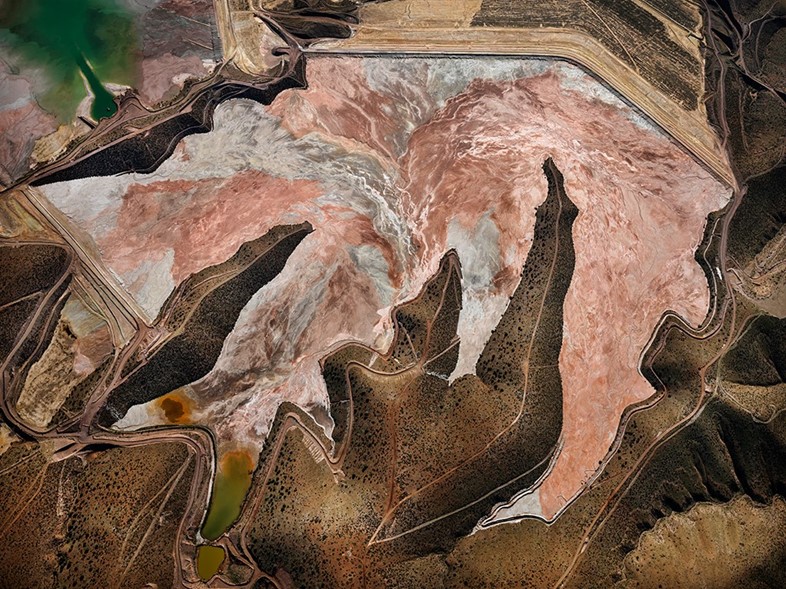
The quality of light is essential to Burtynsky’s image-making, especially in his quest to portray his subject matter with startling clarity. To avoid shadow-play, the artist only photographs in certain conditions: never during the summer months and always in the middle of the day. It is this even distribution of daylight that flattens the picture plane, allowing his macro overviews to almost abstract the scenes below. Taken from propellor planes, helicopters and sometimes with drones, Burtynsky constantly plays with dizzying aerial viewpoints.
“These landscapes look surreal because they’re totally transformed in a way that’s intentional, engineered and all to a purpose,” says Burtynsky. “It’s form following function at its purest.” The eye-catching way Burtynsky brings these man-made worlds into view is partly informed by his early encounters with the work of American photographers Edward Weston and Ansel Adams, and the land artist Robert Smithson. “It was this idea of the everyday somehow transformed into something that evokes a sense of wonder, or plays with taking a lowly subject and having it transcend,” he explains. “For me, that was the entry into engaging us with the wastelands that we create.”
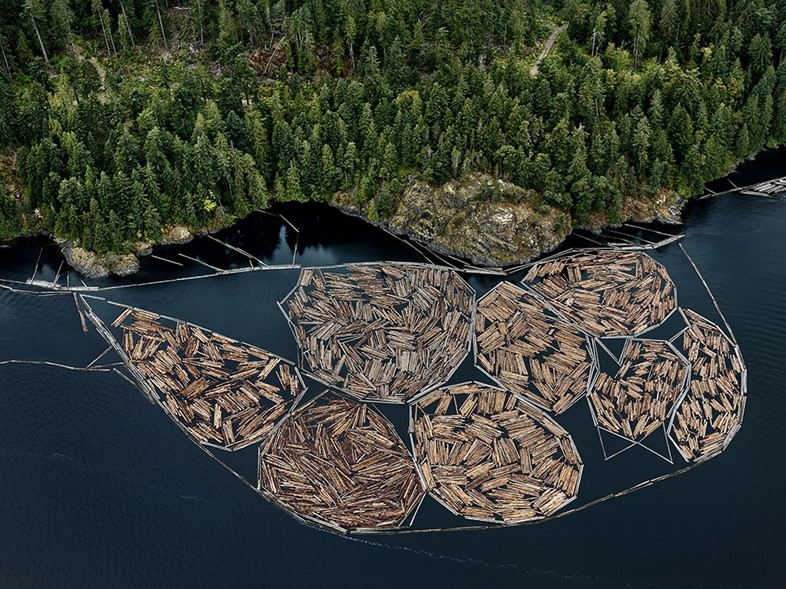
Raising awareness and shifting consciousness are both priorities for Burtynsky, but he has always been clear that his intention is to reveal, not to accuse. “I began by wanting to show the scale at which we, as humans, are now operating,” he says. “To have people appreciate that there’s a problem is the beginning of change. If you care that the planet moves forward and that there’s the possibility of life in the future, we’re going to have to change behaviour today. That’s not something humans have been asked to do before: to make sacrifices for a generation that you don’t know yet.”
The Human Signature is on show at Flowers Gallery, in London, until 24 November 2018. Anthropocene is on show at the Art Gallery of Ontario, in Toronto, until 6 January 2019 and the National Gallery of Canada, in Ottawa, until 24 February 2019. Anthropocene: The Human Epoch is showing in select Canadian theatres now.
